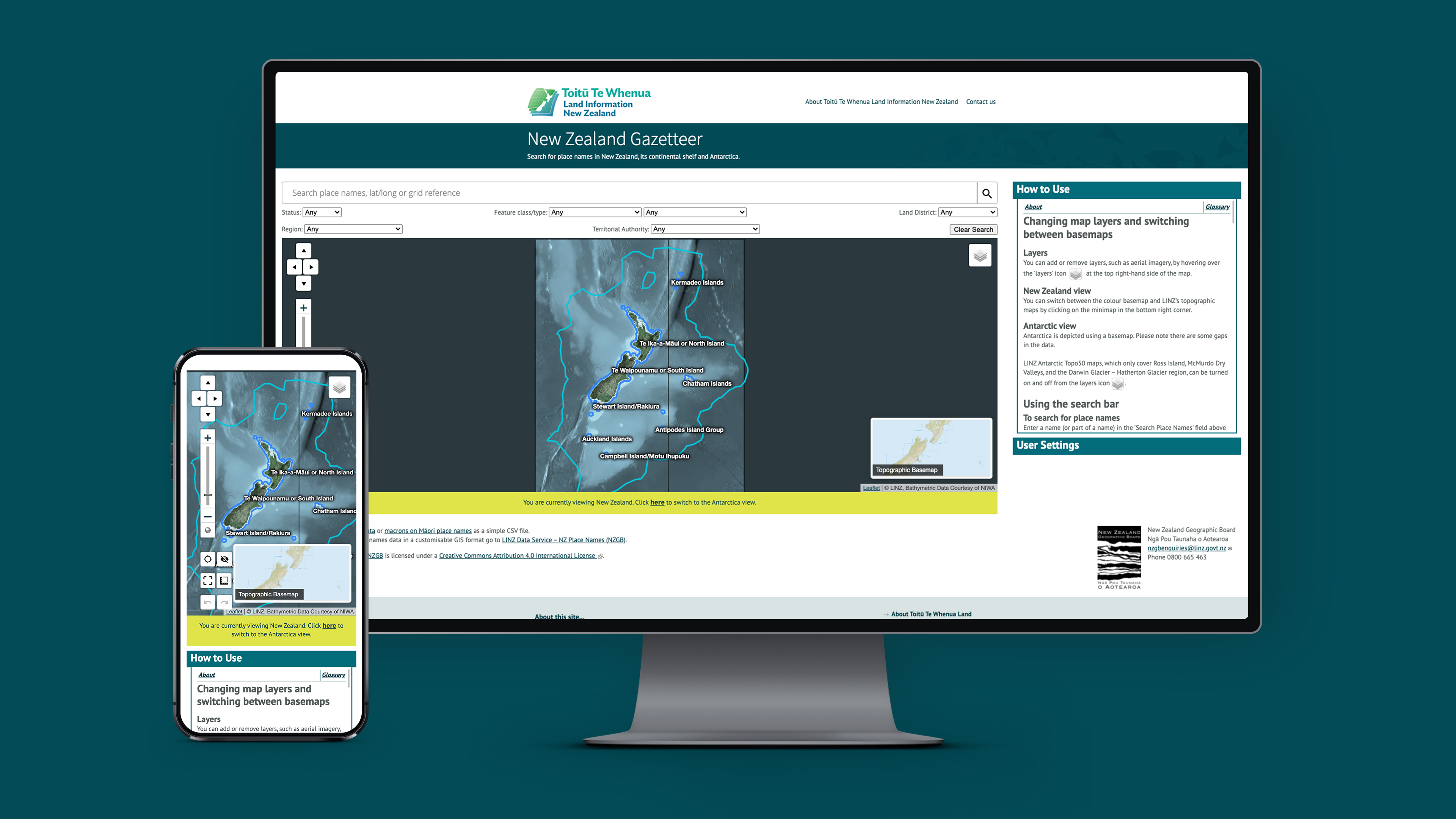Do you have a question? Want to learn more about our products and solutions, the latest career opportunities, or our events? We're here to help. Get in touch with us.

When it comes to Kiwi place names, there’s only one official authority: the New Zealand Geographic Board. It is responsible for providing correct place names and spellings, changing names, and assigning new names.
For anyone needing to find the right name for a place, check its spelling or research the story behind the name, the Board provides an invaluable tool: the Gazetteer.
An interactive map with over 50,000 place names, the Gazetteer is used by local councils and government agencies, historians, artists, and schools — and anyone else needing to research local place names.
The way you access this information has changed dramatically over the past 15 years. The original Gazetteer was a physical book of maps, showing the names and the extent of the features they applied to. These maps worked at the time but place names can change quickly and it was recognised that a new, more responsive alternative to the physical maps was needed.
In 2008, prompted by a legislative amendment, the Gazetteer went online. But trying to meet the Board's regulatory obligations using existing mapping technology wasn’t possible. The interim solution was a series of spreadsheets on the Toitū Te Whenua Land Information New Zealand (LINZ) website but while the spreadsheets provided the necessary information, they were far from user-friendly.
The Gazetteer team knew they needed a better platform to help people find and research official names. In 2011 they began working on a project to tie their online database to a digital map that could be updated instantly. Datacom came on board to provide a proof of concept and then worked to take the service live. In 2013, the first iteration of the Gazetteer went online, and it’s been improving ever since.

The 2013 version of the Gazetteer was updated in 2018 to a new platform, giving it more geographical reach, and in 2019 the Board improved its accessibility. Upgrades are ongoing, and although there’s still room for improvement, the tool is proving to be more versatile and user-friendly every year.
“It’s come a long way,” says Wendy Shaw, Secretary of the New Zealand Geographic Board. “There’s a huge amount of extra functionality. There are now user settings that you can switch on and off; you can look at Antarctica, undersea, and right out to the limits of the continental shelf up to 12 nautical miles. The search feature drops down matches and shows you locations as you hover over search results — there are so many spatial connections.”
The Gazetteer isn’t a high-use site, but it’s over-delivering on the Board’s obligations and simultaneously growing its reach.
“Our most recent stats show that users were up 56 per cent year-on-year, with new users up 58 per cent, and our data layers are getting more traction, too,” says Wendy. “We don’t get a huge amount of traffic, but whenever we’ve spoken to people about the Gazetteer they’ve thought it was really useful.”
The Gazetteer will continue to be tweaked and upgraded over time to provide Kiwis with more insights into the country's official — and unofficial — place names. The Datacom team has been working with the Board since the Gazetteer’s launch as a digital map, working to get the best possible results within a tight budget.
“The Datacom team has been pretty amazing to work with,” says Wendy. “We had a fixed timeframe and budget for the work, and they kept to our fixed amount.”
Wendy and the other three members of her team are hoping to improve the user-friendliness of the tool and extend its usefulness for students and historians.
“We’d like to add audio for pronunciation, and photos of places and features,” says Wendy. “We also plan to add more stories — there are 53,000 place names but only 15,000 have information about their meaning or history. In the future we plan to populate every single place name with its story.”